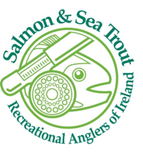Inland Fisheries Ireland welcomes new crayfish legislation
Anglers reminded to maintain vigilance against crayfish plague
Tuesday, 2nd October 2018: Inland Fisheries Ireland is welcoming new legislation which will strengthen existing measures to protect the native white-clawed crayfish. The regulations will provide authorities in Ireland with the powers to prevent the arrival and spread of the five non-native species of crayfish included on the EU list of invasive alien species of Union concern.
The White-clawed Crayfish is considered a globally threatened species and Ireland holds one of the largest surviving populations. The freshwater species is found in many rivers and lakes in Ireland and is protected under both Irish law and the EU Habitats Directive. Throughout Europe, the species has been decimated by the impact of a disease called Crayfish Plague.

Many North American crayfish species are resistant to Crayfish Plague and can act as carriers of the disease which is rapidly fatal when passed to the White-clawed Crayfish. While there is no evidence that North American or other non-native crayfish have been introduced to Ireland, the crayfish plague has now reached five rivers in Ireland possibly by spores carried on fishing equipment.
The prospect of the disease being controlled depends on the absence of non-native crayfish. The European Union (Invasive Alien Species) (Freshwater Crayfish) Regulations 2018 targets the introduction of several species of non-native crayfish which have been included on the EU list of invasive alien species of Union concern (‘the Union list’).
Dr Ciaran, Byrne, CEO of Inland Fisheries Ireland said: “We welcome this new legislation which is needed if we are to resist the threat from introduced crayfish. If invasive alien crayfish were to be introduced in Ireland, this could have a devastating effect on the ecology of many of the lakes and rivers.
We would urge the public to comply with the new regulations and help protect our native crayfish species. In particular, we would remind anglers to maintain vigilance in relation to the crayfish plague by carrying out routine cleaning and drying of equipment once leaving a river and before using it again.”
The public is also asked to alert the authorities of any mass mortalities of crayfish or sightings of unusual crayfish (e.g. red claws, large size) by contacting the National Parks and Wildlife Service (www.npws.ie), the National Biodiversity Data Centre (www.biodiversityireland.ie) or Inland Fisheries Ireland (www.fisheriesireland.ie).
ENDS
